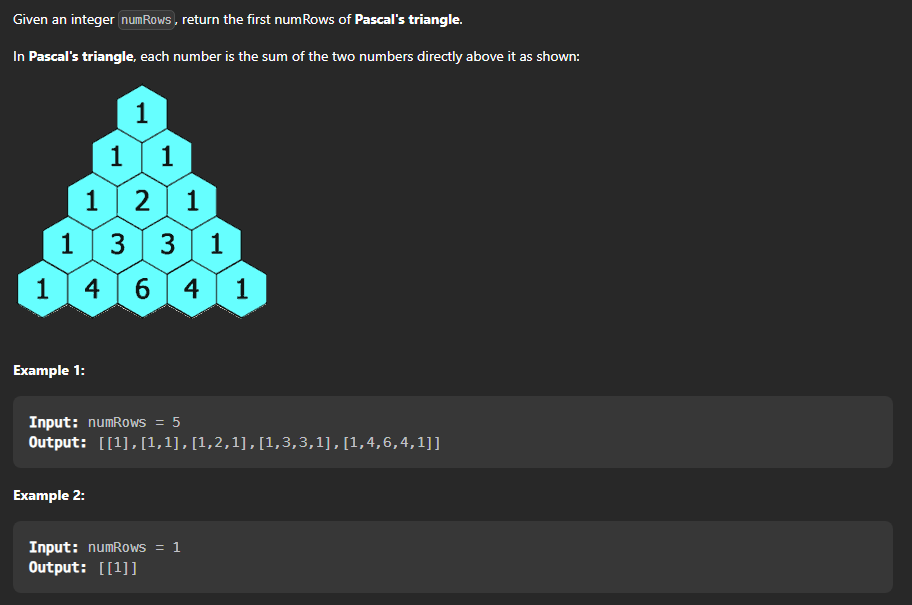PascalsTraingle
Pascals traingle

Problem Link : Pascals Triangle
Problem statement :
Given a non-negative integer numRows, generate the first numRows of Pascal's triangle. In Pascal's triangle, each number is the sum of the two numbers directly above it.
Let's discuss about the problem , what it demands and how to approach the problem.
This is a very simple problem , we just need to observe the pattern and then we can easily solve the problem.
Methods to solve the problem :
Step 1 : First we need to observe the pattern of the pascals traingle , we can see that the first and the last element of each row is 1 and the middle elements are the sum of the two elements above it.
Step 2 : Now we can simply iterate through the rows and then iterate through the columns and then set the value of the first and the last element of each row to 1 and then for the middle elements we can simply set the value of the element to the sum of the two elements above it.
Recursive approach:
class Solution {
public:
vector<vector<int>> generate(int numRows) {
// base case
if(numRows == 0){
return {};
}
if(numRows == 1){
return {{1}};
}
if(numRows == 2){
return {{1},{1,1}};
}
// recursive case
vector<vector<int>> ans = generate(numRows-1);
vector<int> temp;
temp.push_back(1);
for(int i = 1 ; i < numRows-1 ; i++){
temp.push_back(ans[numRows-2][i-1] + ans[numRows-2][i]);
}
temp.push_back(1);
ans.push_back(temp);
return ans;
}
};
Time Complexity : O(n^2) Space Complexity : O(n^2)
Iterative approach: Remember just two values are important for each row , the previous row and the current row. and we can use the previous row to calculate the current row.
Add the values of the current-1 and current position of the previous row to get the current position of the current row.
class Solution {
public:
vector<vector<int>> generate(int rows){
vector<vector<int>> ans;
for(int i = 0 ; i < rows ; i++){
// base case -> first and last element of each row is 1
vector<int> temp(i+1,1);
// middle elements are the sum of the two elements above it.
// we are running the loop till i because the number of elements in each row is equal to the row number.
for(int j = 1 ; j < i ; j++){
temp[j] = ans[i-1][j-1] + ans[i-1][j];
}
ans.push_back(temp);
}
return ans;
}
};
Time Complexity : O(n^2) Space Complexity : O(n^2)